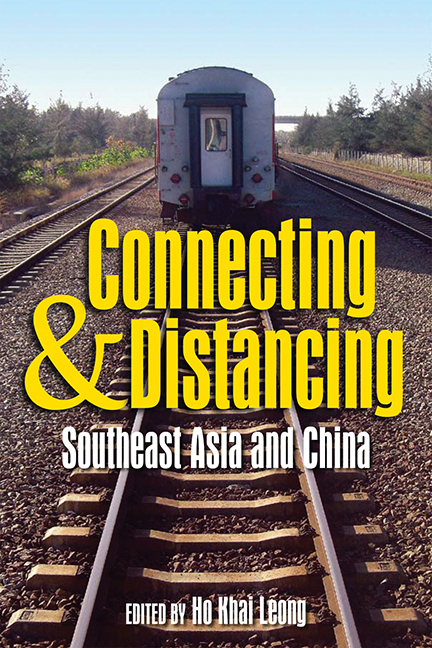Book contents
- Frontmatter
- Contents
- Contributors
- Introduction
- PART I History and Remembrance
- 1 China Meets Southeast Asia: A Long-Term Historical Review
- 2 Philippine-China Connection from Pre-Colonial Period to Post-Cold War Era: An Assessment
- 3 Defining Identity through Remembering the War: Representation of World War II in Chinese Newspapers in the Immediate Post-war Singapore
- 4 Re-positioning “Patriotism”: Various Aspects of Financial Support to China in Penang around 1911
- 5 Perceptions of China for the Overseas Chinese Tea Traders in Colonial Singapore, 1928–58
- 6 Myanmar's Relations with China from Tagaung through Hanthawati-Taungngu Periods
- PART II The Cultural and Chinese Identity
- PART III Economy, Politics and Regionalism
- Index
2 - Philippine-China Connection from Pre-Colonial Period to Post-Cold War Era: An Assessment
from PART I - History and Remembrance
Published online by Cambridge University Press: 21 October 2015
- Frontmatter
- Contents
- Contributors
- Introduction
- PART I History and Remembrance
- 1 China Meets Southeast Asia: A Long-Term Historical Review
- 2 Philippine-China Connection from Pre-Colonial Period to Post-Cold War Era: An Assessment
- 3 Defining Identity through Remembering the War: Representation of World War II in Chinese Newspapers in the Immediate Post-war Singapore
- 4 Re-positioning “Patriotism”: Various Aspects of Financial Support to China in Penang around 1911
- 5 Perceptions of China for the Overseas Chinese Tea Traders in Colonial Singapore, 1928–58
- 6 Myanmar's Relations with China from Tagaung through Hanthawati-Taungngu Periods
- PART II The Cultural and Chinese Identity
- PART III Economy, Politics and Regionalism
- Index
Summary
INTRODUCTION
This chapter examines the Philippines-China connection from the pre-colonial period to the post-Cold War era. It shows how the people of the two countries interacted with one another before the Philippines was colonized by Spain, how this interaction evolved during the time it was under Spanish and American colonial rule, and how this was further transformed or reconfigured after World War II and until the end of the Cold War. It also identifies the outcome of this interaction especially to the Philippines.
This chapter made use of available data in discussing and analysing the experience of the Philippines in “connecting, distancing and positioning” herself with China through time — in response to new and emerging challenges and opportunities. These three overlapping processes, especially the positioning phase, are expected to continue without let-up in the years ahead, especially now that China has emerged as a major player and strategic rival of the United States — the long-time ally of the Philippines with whom it has close and special relations. The Philippines was under the colonial rule of the United States from 1898 to 1946.
The people of the islands now known as the Philippines were “connected” with China many centuries before they were colonized by the Spaniards in 1565. Chinese records disclose that the Filipino traders from Luzon were the ones who travelled first to China long before the Chinese ever stepped foot in the Philippines.
Initial contact between the Filipinos and the Chinese took place when traders from Mai-i (now Mindoro, a major island in Luzon) went to Canton (Guangdong) in the tenth century through the Champa (Vietnam) coast. In 982, the Mai-i traders went directly to Canton for the first time. They were treated as state guests and feudatory princes by the Chinese emperor. The annals of the Sung Dynasty made mention of Mai-i for the first time in AD 998. It was also reported that during the Sung dynasty, “Chinese goods began to flow in a continuous stream into the Philippines” and that “Chinese colonies were founded in the coastal towns of the (Philippine) archipelago”.
- Type
- Chapter
- Information
- Connecting and DistancingSoutheast Asia and China, pp. 31 - 61Publisher: ISEAS–Yusof Ishak InstitutePrint publication year: 2009

